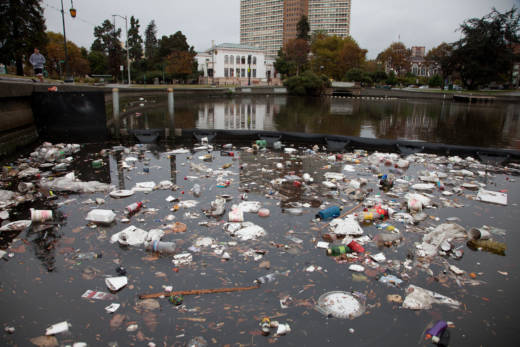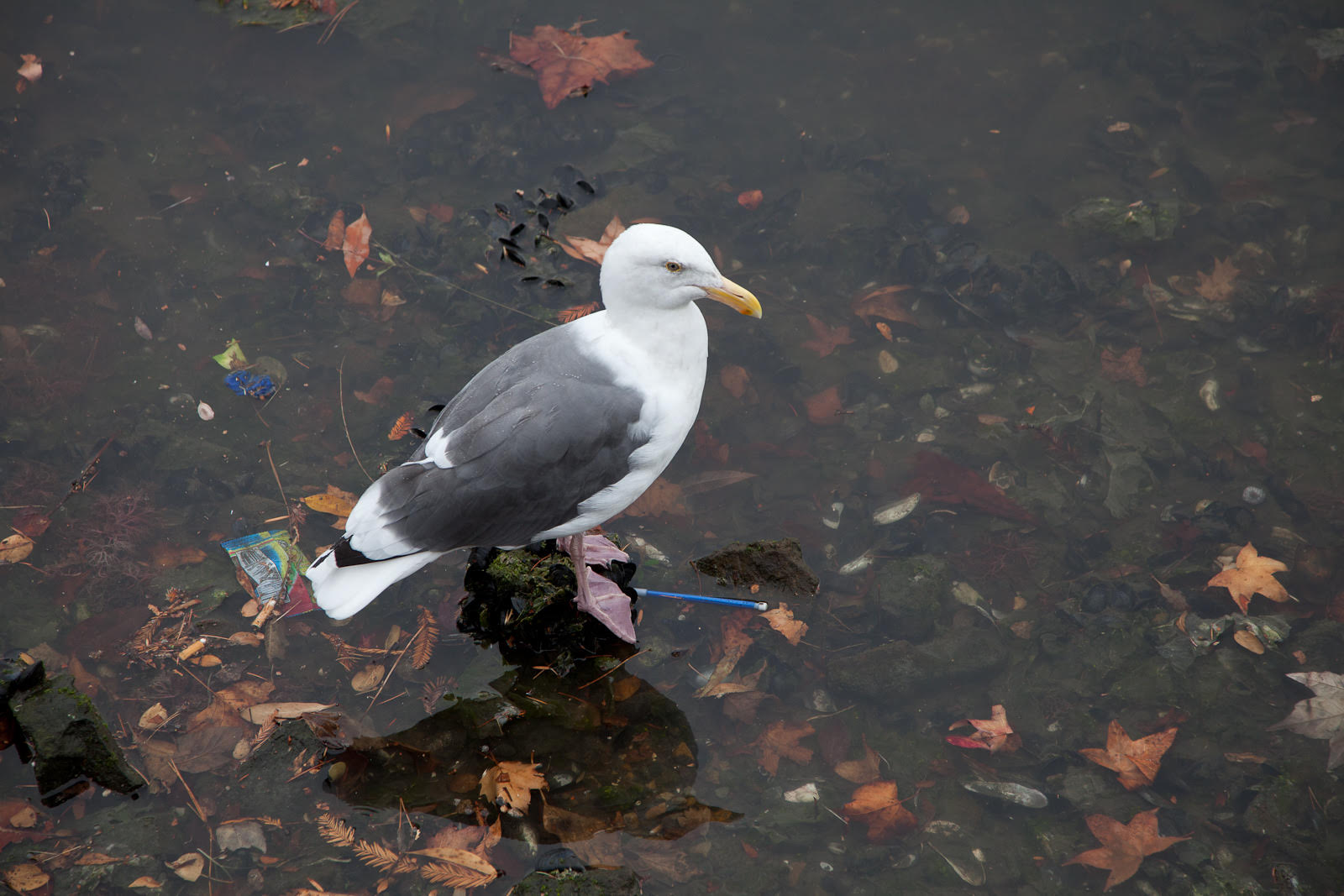Oakland has one of the worst rates among Bay Area cities for garbage going into the ocean. Illegal dumping, sidewalk litter and homeless encampments all contribute to more than 300,000 pounds of trash leaving Oakland and entering the ocean each year.
But on Tuesday, at an Oakland Public Works meeting, the city announced that it had finally met a summer deadline for cutting down on trash that enters storm drains. The Regional Water Quality Control Board originally ordered Oakland to cut its trash by 70 percent by July. The city missed that deadline, saying it had only reduced trash by 45 percent. But this week, watershed manager Lesley Estes says they’ve now met that goal with a plastic bag ban and better accounting.
“We were really under-measuring how much trash we were removing from above ground, before it actually got into the storm drainage system,” said Estes.

The city says it was able to meet its 70 percent reduction goal because it started keeping better track of what was on the ground before it went down storm drains. This new accounting showed the city was picking-up more than it thought, helping bump the 45 percent compliance number above 70 percent.
Oakland also deployed more volunteer clean-up crews in the past year, and Alameda County expanded its plastic bag ban in May, which helped.


